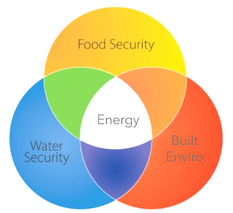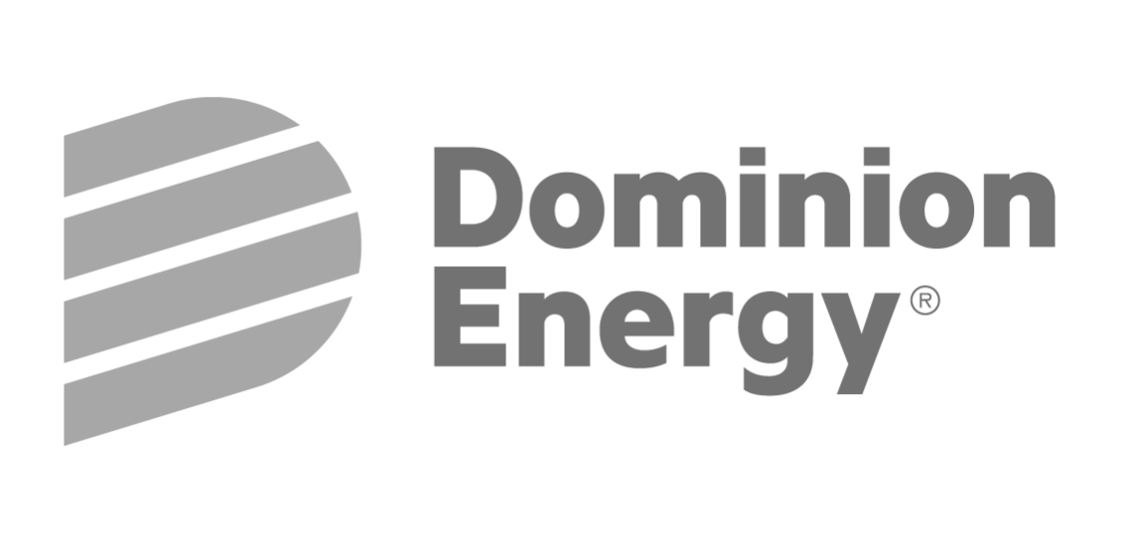"Resiliency includes knowing when an unwanted transformation is inevitable and instead
deliberately transforming all or parts of a system such that the new system delivers what is valued and wanted."
deliberately transforming all or parts of a system such that the new system delivers what is valued and wanted."
|
— Brian Walker, a renowned ecologist in Australia
|
Always Start With "Why?"
Extreme weather events fueled by global warming will increasingly disrupt food and water systems and strain physical infrastructure. And these disruptions cause conflict. Constant cross-border migration patterns to mass starvation run parallel to but rarely connect with empty promises by politicians and corporations about achieving net-zero by some future date (2050?). This combined with unrelenting debates about the cost of energy security or decarbonization delays the inevitable need for fundamental change.
While an immediate energy transition that lowers emissions is essential, resiliency—the ability to adapt to a changing climate—must also be a critical focus.
Extreme weather events fueled by global warming will increasingly disrupt food and water systems and strain physical infrastructure. And these disruptions cause conflict. Constant cross-border migration patterns to mass starvation run parallel to but rarely connect with empty promises by politicians and corporations about achieving net-zero by some future date (2050?). This combined with unrelenting debates about the cost of energy security or decarbonization delays the inevitable need for fundamental change.
While an immediate energy transition that lowers emissions is essential, resiliency—the ability to adapt to a changing climate—must also be a critical focus.
|
So, do something about it
With an ambitious vision to become more resilient in the face of these challenges as well as those brought on by the COVID-19 pandemic, the City of Half Moon Bay, California, launched a Coastside Recovery Initiative that includes a new startup incubator-accelerator called the Coastside Venture Studio (CSVS). |
On April 1, 2024, the Society opened the CSVS with a mission to foster startups dedicated to solving urgent resiliency challenges that particularly affect coastal and agricultural communities. It is the only incubator-through-accelerator program in the nation dedicated entirely to resiliency tech, or “Res-tech.”
Located in the heart of downtown Half Moon Bay, the CSVS is a vibrant entrepreneurial epicenter for young, scalable companies that can contribute to an equitable, thriving Coastside community. CSVS supports high-potential pre-seed and seed-stage startups in three primary res-tech sectors: agriculture, water, and the built environment (infrastructure, materials, etc).
Why Half Moon Bay, California
Located in the heart of downtown Half Moon Bay, the CSVS is a vibrant entrepreneurial epicenter for young, scalable companies that can contribute to an equitable, thriving Coastside community. CSVS supports high-potential pre-seed and seed-stage startups in three primary res-tech sectors: agriculture, water, and the built environment (infrastructure, materials, etc).
Why Half Moon Bay, California
|
Half Moon Bay is a beautiful coastal city in San Mateo County, California, adjacent to Silicon Valley, Stanford University, and about 20 miles from San Francisco and UC Berkeley. (It is called Half Moon Bay because its coastline is shaped as a crescent). You may not know Half Moon Bay but you probably know what makes it famous: Mavericks, a big-wave surf location. The city is a hub for a thriving coastal agriculture industry. It also has a working harbor and an active tourism industry, and one of the largest employers is the Ritz-Carlton hotel.
A comparison of past and present photos of the Ritz-Carlton offers a glimpse of what’s at stake for the world. The ocean has eroded and exposed a row of concrete support pillars (insert photo) that rear out of the bluff. This grand hotel is starting to feel a bit too close to the edge. |
Our vision
Being resilient, ultimately, is a choice: it’s about choosing what to preserve, choosing who to protect, choosing what to allow to change, and choosing what to intentionally change in a new and reimagined way.
Being resilient, ultimately, is a choice: it’s about choosing what to preserve, choosing who to protect, choosing what to allow to change, and choosing what to intentionally change in a new and reimagined way.
|
To resist change is to miss out on opportunities to create a better future. To remain unchanged is to buy into the long-held myth that the world today is as good as it gets. To ignore this choice to repair our relationships with our resources and each other is to believe that the systems we’re still holding on to—systems built on extraction, inequities, injustices, and the willful attempt to control nature—are the way that things should always be.
|
"Of all the recommendations in
the Coastside Recovery Initiative, this one [a startup incubator] seemed like the most challenging to implement. And yet, here we go." — Erica Wood, CSVS advisor |
What participating ResTech startups get
Each year, the CSVS invites a new cohort of startups to participate in-person or virtually. Cohorts consist of two or three startups in each of the three ResTech sectors. Every startup receives:
What participating ResTech startups get
Each year, the CSVS invites a new cohort of startups to participate in-person or virtually. Cohorts consist of two or three startups in each of the three ResTech sectors. Every startup receives:
- Office space and business amenities on Main Street in Half Moon Bay.
- Mentors who help founders launch their startup, from incorporation filings and stock option agreements to proof-of-concept and customer discovery.
- Access to nearby world-class research universities and subject matter experts.
- Opportunities to network with early-stage venture investors in Silicon Valley and appropriate sources of capital.
- Integration with local and regional businesses and organizations to explore proof-of-concept, stage pilot tests, and undertake customer discovery in real-life conditions.
Breaking update
CSVS opened on April 1, and already the cohort is half full. These participating startups are already working with mentors and accessing capital. Contact us for more information.
CSVS opened on April 1, and already the cohort is half full. These participating startups are already working with mentors and accessing capital. Contact us for more information.
Sources:
Excerpt from California Against the Sea, by Rosanna Xia, pp. 145-6
New Venture Studio Launches in Half Moon Bay, The Daily Journal
Local Business Incubator, Half Moon Bay Review
Excerpt from California Against the Sea, by Rosanna Xia, pp. 145-6
New Venture Studio Launches in Half Moon Bay, The Daily Journal
Local Business Incubator, Half Moon Bay Review
Table of Contents
|
When we talk about resource constraints—such as shortages in food or water, vulnerable infrastructure, or increases in the cost of energy—we tend to forget how deeply intertwined these resources are.
The risks are greater than we realize. See also The future evolution of energy-water-agriculture interconnectivity across the US, University of Maryland
|
|
For more than half a century, American farmers have had a clear mandate: grow more! For instance, in the 1970s, US Agriculture Secretary Earl Butz urged farmers to plant “from fencerow to fencerow” and to “get big or get out.”
In recent years, however, the pressure on farmers to "grow more" has become more complex. |
See also Fundamentals of Energy Analysis for Crop Production Agriculture, Ohio State University
See also Decarbonizing Water, University of Colorado Boulder
|
The built environment (e.g. infrastructure, materials, etc.) contributes about 40% of global carbon dioxide (CO2) emissions, an often-overlooked stress on the climate that grows more apparent by the year.
In an effort to curb climate change through reduced greenhouse gas emissions, it is essential to address the outsized carbon footprint of the built environment. |





















































































